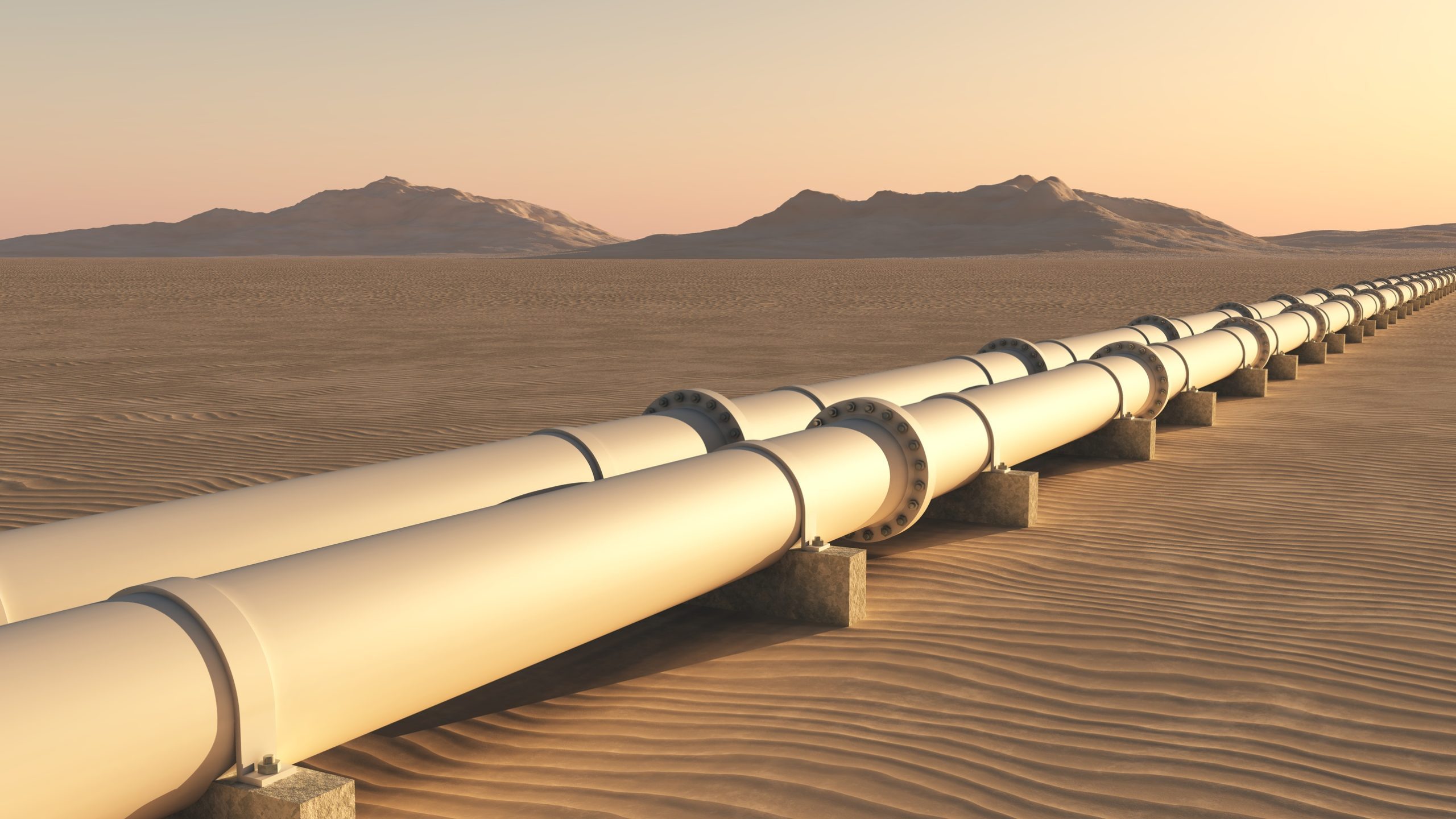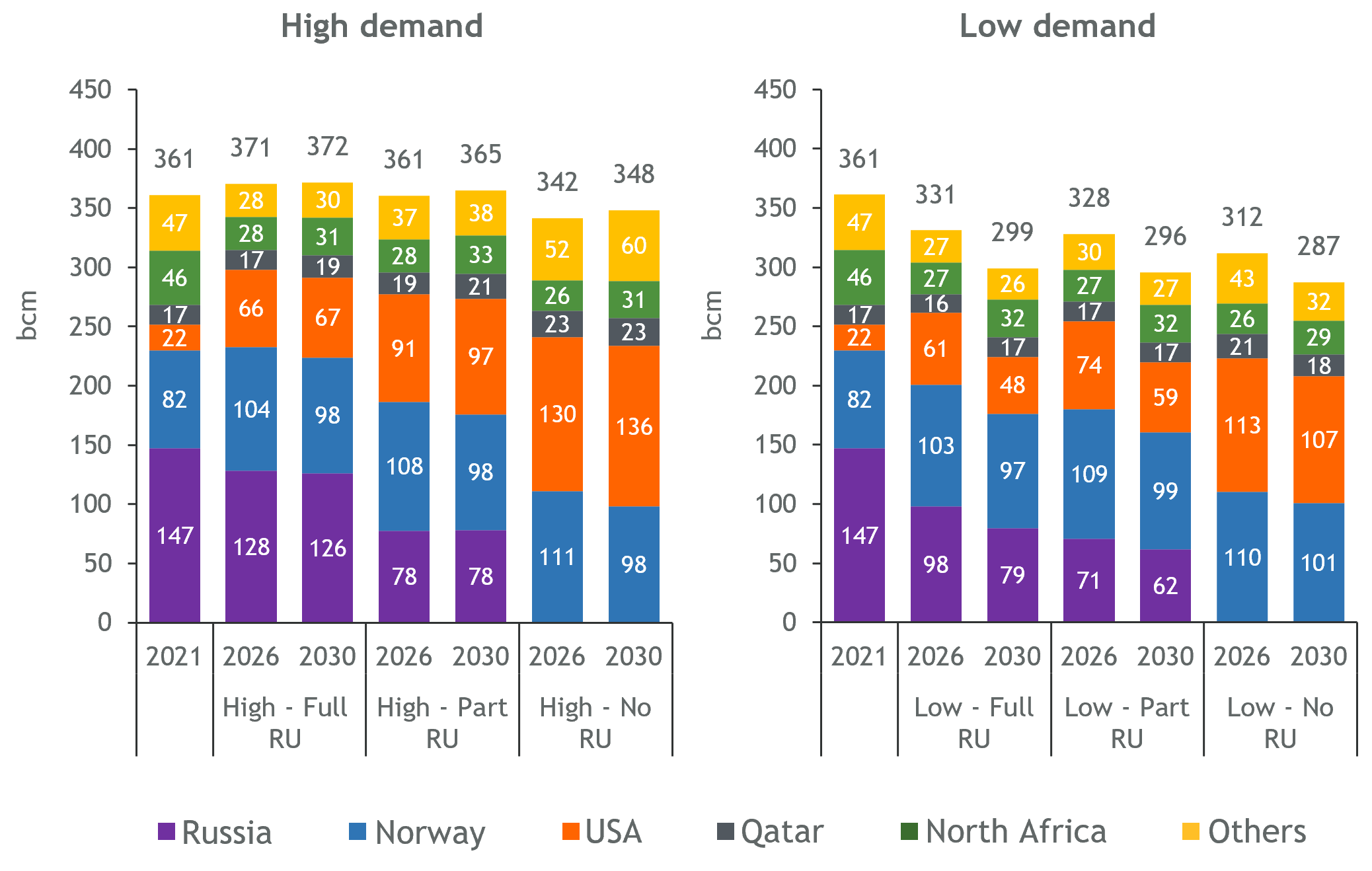
The less gas the EU imports from Russia in the future, the more it would rely on imports of liquefied natural gas (LNG) from other countries. In contrast, imports via pipelines from Norway, North Africa and Azerbaijan to the EU can only be increased to a limited extent. The reduction of gas demand by electrification, efficiency improvements and the production of biomethane as a substitute for natural gas by 2030 are important drivers for the development of gas prices. The development of the global gas markets until 2030 with respect to uncertainties in gas supply and demand was investigated by the Institute of Energy Economics at the University of Cologne (EWI) in the study “Developments in the Global Gas Markets until 2030 – Scenario Analysis of Restricted Trade with Russia” on behalf of Zukunft Gas e.V.
The analysis includes six scenarios combining demand and supply uncertainties. On the supply side, the availability of Russian gas is varied for a group of countries (EU and other European, North American, and Asian countries). Gas trade between this “coalition of countries” and Russia is either unrestricted, partially restricted (a maximum of 20 per cent of the total imports of each member of this group from Russia) or completely restricted in the scenarios. On the demand side, high and low global demand for natural gas is modelled, considering climate targets.
The availability of LNG on the world market is limited. However, the USA could provide LNG on a large scale and replace Russia as the EU’s former largest gas supplier. Assuming no gas trade between Russia and the EU, up to 136 billion cubic meters of US LNG (equivalent to up to 90 per cent of gas imports from Russia in 2021) could be imported into the EU in 2030, depending on the scenario, according to the study. The EU’s second most important LNG supply option would then remain Qatar. “Without gas imports from Russia, LNG from the USA could account for up to 40 percent of the EU’s total imports by 2030. A central role is played by liquefaction projects in the USA,” says Dr. Eren Çam, manager at the EWI, who conducted the study together with Hendrik Diers, Jan Kopp, and Michael Moritz.

According to the study, global liquefaction capacities could grow compared to today by up to two thirds to more than 1,050 billion cubic meters per year. More than a third of the new capacities could be constructed in the USA. The realization of liquefaction projects in the USA is a key prerequisite for more LNG imports from the USA. However, as the gas demand in Europe is expected to decrease in the medium to long term against the background of climate protection efforts and emission targets, considerable uncertainties exist whether these investments will be realized: “The construction of liquefaction capacities is complex and cost expensive. Therefore, investors usually wait for longer-term commitments,” says Çam.
In the context of the study, the EWI also analyzed the possible development of regasification capacities in Europe. In terms of time, the expansion in the various scenarios mainly takes place by 2026. “Floating regasification terminals procured in the short term, such as those in Eemshaven, Alexandroupolis and on the German coast, as well as other projects already confirmed, could provide an overall relief,” says Eren Çam. “The bottleneck for LNG trade in Europe is more on the global liquefaction capacity side than on the EU regasification facilities.”
If gas demand were to decline by 20 per cent by 2030 compared to 2021, wholesale prices could reach the level of 2018 – regardless of whether gas trade with Russia is restricted or not. Demand reduction through electrification, efficiency gains and production of biomethane as a natural gas substitute eases the European gas market in the scenarios. If demand in the EU remained at the 2021 level without gas trading with Russia, gas prices in 2030 could be above the 2021 level.